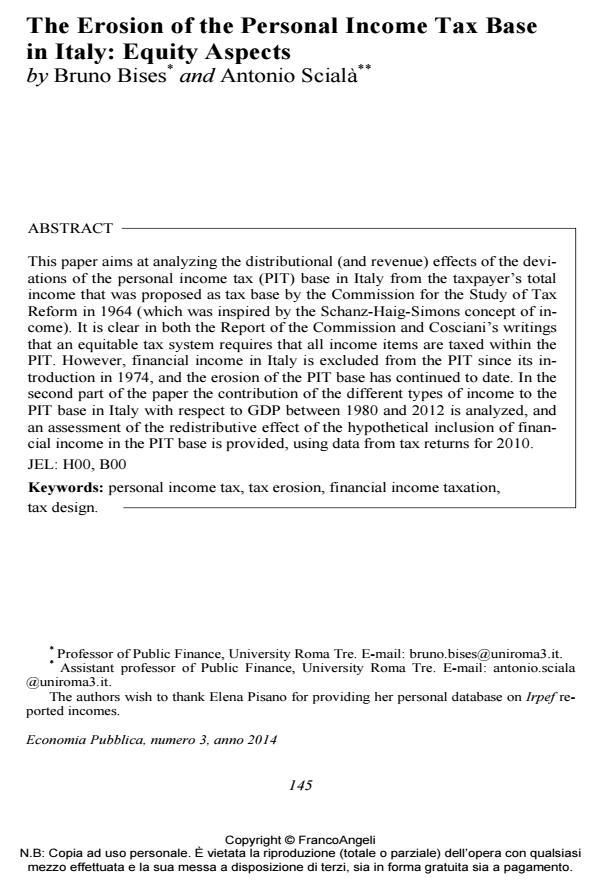The Erosion of the Personal Income Tax Base in Italy: Equity Aspects
Journal title ECONOMIA PUBBLICA
Author/s Bruno Bises, Antonio Scialà
Publishing Year 2015 Issue 2014/3
Language English Pages 22 P. 145-166 File size 232 KB
DOI 10.3280/EP2014-003008
DOI is like a bar code for intellectual property: to have more infomation
click here
Below, you can see the article first page
If you want to buy this article in PDF format, you can do it, following the instructions to buy download credits

FrancoAngeli is member of Publishers International Linking Association, Inc (PILA), a not-for-profit association which run the CrossRef service enabling links to and from online scholarly content.
This paper aims at analyzing the distributional (and revenue) effects of the deviations of the personal income tax (PIT) base in Italy from the taxpayer’s total income that was proposed as tax base by the Commission for the Study of Tax Reform in 1964 (which was inspired by the Schanz-Haig-Simons concept of income). It is clear in both the Report of the Commission and Cosciani’s writings that an equitable tax system requires that all income items are taxed within the PIT. However, financial income in Italy is excluded from the PIT since its introduction in 1974, and the erosion of the PIT base has continued to date. In the second part of the paper the contribution of the different types of income to the PIT base in Italy with respect to GDP between 1980 and 2012 is analyzed, and an assessment of the redistributive effect of the hypothetical inclusion of financial income in the PIT base is provided, using data from tax returns for 2010.
Keywords: Personal income tax, tax erosion, financial income taxation, tax design.
Jel codes: H00, B00, H24
- Analisi distributiva dell'IRPEF utilizzando i microdati di fonte fiscale Paolo Di Caro, in ECONOMIA PUBBLICA 1/2017 pp.35
DOI: 10.3280/EP2017-001002
Bruno Bises, Antonio Scialà, The Erosion of the Personal Income Tax Base in Italy: Equity Aspects in "ECONOMIA PUBBLICA " 3/2014, pp 145-166, DOI: 10.3280/EP2014-003008